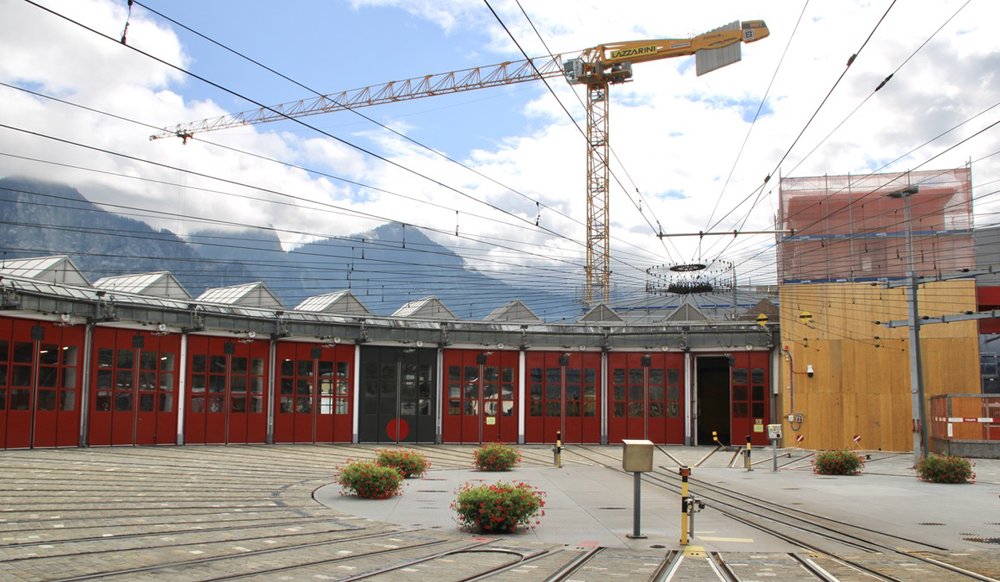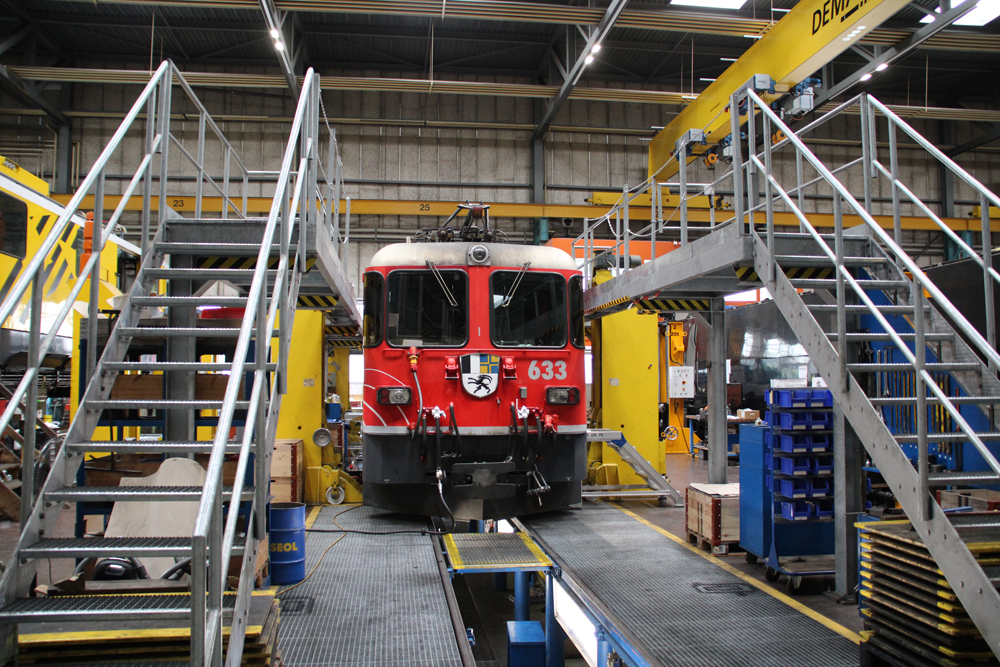The year was 1966; I was 19 years old and starting my second summer working on the Great Lakes. This year I was called to be a deckhand on the Leon Falk Jr. of the Hanna fleet. At 730 feet overall, she was one of the largest boats on the Great Lakes, and could haul 26,000 long tons of iron ore. The Falk was still relatively new, having been converted into a bulk carrier from a World War II ocean tanker in 1962.
I enjoyed sailing. It not only meant good money, but a chance to see the various ports and railroads. I was looking forward to what the summer would bring. After boarding the Falk in Cleveland, I discovered she was in a triangular trade: Cleveland to Taconite Harbor, Minn., to Indiana Harbor, Ind., to Escanaba, Mich., and back to Cleveland.
Of these ports, Escanaba was interesting because of Chicago & North Western’s wooden ore dock and fleet of Fairbanks-Morse H16-66’s. Indiana Harbor wasn’t too bad either; it offered the New York Central, Baltimore & Ohio, Elgin, Joliet & Eastern, and Indiana Harbor Belt. I even managed to photograph a Gulf, Mobile & Ohio coal train there. However, Taconite Harbor, “Tac Harbor” to most sailors was perhaps the most interesting of all.
It is about as desolate a place on the lakes as you can find. Carved out of Lake Superior’s rugged North Shore in the mid-1950’s, its sole function was to provide a place to load the Erie Mining Company’s taconite pellets into lake-boats. The pellet plant was 75 miles inland at the mine, so an industrial railroad hauled the pellets to the dock. Aside from a general store a couple of miles away at a “place” called Shroeder, there was nothing for miles and miles but the Great North Woods.
It wasn’t this desolation that I remember most; it was how we handled the boat. All lakers entered the manmade harbor through the main entrance south of the dock. They were then turned before loading so they could sail directly into the lake when finished. This was done by placing the bow against a wood pad on the dock face, and running the engines “slow ahead.” A cable on the port side helped keep it in place. As the Falk got perpendicular to the dock, we’d let go of the cable, reel it back on board, and change it to the starboard side so it could keep the bow positioned while it helped pull us around. After being tied up, the boat was loaded by shuttle conveyors that came out of a dock wall. They could move laterally across the boat to distribute the pellets evenly in the cargo hold.
Turning the boat was the most memorable part of the operation for me. The problem was, you were working on a four-foot-wide dock apron. At the water’s edge was a piece of rail to keep you from slipping into the harbor. Behind you was a vertical concrete wall with only a pipe railing to grab onto. Since there were usually four of us, three deckhands and a deckwatch, it made things a bit crowded, particularly since you were working around a bollard used to tie the boat up. We had about 100 feet of 1-inch steel cable to pull, so we had our work cut out for us. It wasn’t unusual for the cable to drag on the rocky harbor bottom.
As a deckhand it was my lot in life to turn the boat. However, I was promoted to deckwatch that summer and began working the 12-to-4 watch each morning, and afternoon. Thus, if the Falk arrived at 1 p.m., I would (theoretically) be able to watch the operation from the deck. Or so I thought.
As it turned out, we always arrived 1) during my watch; 2) as I was going on watch, or 3) as I was going off watch. It was my fate to be on the dock every time. This led to some overtime, but I would’ve preferred to watch and photograph the operation at least once. Who would have thought that over a dozen straight visits to Tac Harbor would result in my working every time?
Rail service was interesting because Erie Mining was using gray-and-silver F9’s on their trains. Two trains a day were operated, about 9 a.m. and 3 p.m. A few times I watched them unload from about two miles offshore while we waited for another boat to finish loading. Frustration. Once, however, while still a deckhand, I was able to photograph the 3 p.m. train on a sunny day. Since there weren’t a lot of photographic opportunities from the boat, I went inside the loop.
The sun was right, the train came, and I managed to get a nice sequence of photos as it crept slowly across the top of the dock. It unloaded without stopping and dumped the pellets into specific bins above the shuttle conveyors. It was an impressive, efficient operation accomplished through the use of rubber tires on the cars that could open and close the bottom doors. Sections of rail on the dock were raised, and lowered as needed so the tires could turn on them, and actuate the doors. The train simply went round the loop, and returned to the plant for reloading.
Summer eventually ended, and I went back to more plebeian tasks like school. Nevertheless, I’ll always remember my summer at Tac Harbor. With the news that Erie Mining successor LTV Steel is to shut down its railroad and dock in 2001, I treasure the memories even more.













